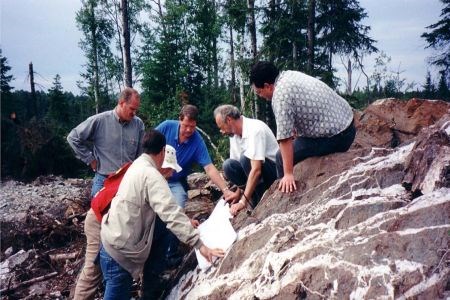Health and safety in the mining industry has come a long way, and a new program offered by a North Bay-based firm is hoping to take it to the next level.
Safety in the mining industry has improved significantly over the past 30 years, said Ric deMeulles, president and general manager of the Mining and Aggregates Safety and Health Association (MASHA).
"Now it's time to think about, is this as good as it's gonna get," he said.
The MASHA goal, and one adopted by the mining industry, deMeulles said, is zero loss time injuries by 2015, "and we are on that path."
"Now mining is safer than working in a hospital," he explained, based on injury rates, although injuries that do occur in mines tend to be far more serious.
But how do you get to a zero loss time injury level? Pat Bolger, of Bolger and Associates Inc. believes the creation of the proper culture can propel mining to the next level of health, safety and environmental responsibility.
"Investing in supervisory and leadership training has a significant positive effect on reducing workplace injuries and other losses," Bolger said.
And his "Achieving Health, Safety and Environmental Leadership Excellence in the 21st Century" course has been awarded 0.5 Certification Maintenance Points (CMPs) from the Board of Canadian Registered Safety Professionals (BCRSP).
"This course is geared towards building competency in supervisors, managers and health and safety professionals, which as you get leadership competency you have a better chance of getting good performance from the entire workforce," Bolger said.
"Because you create a culture that does things in a responsible manner."
Even the little things, like housekeeping or general clean up and the lack of -- messy work conditions -- contribute to the responsible culture, he said.
"A strong health, safety and environmentally responsible culture leads better performance, which leads to better profitability."
The Bolger program focuses on 10 pillars to achieve improved safety, health and environmental performance: culture, behaviour, responsibility, accountability, communication, training, risk management, change management, accident prevention and systems leadership.
Improving health, safety and environmental culture leading to a zero harm target is also beneficial to the bottom line of mining companies.
"By not having accidents, which are very expensive and create huge loss, there is a great financial gain in proactive protection against accidents," Bolger said.
If you have a five or 10 per cent mark up on your product, start factoring in how many items it will take to pay off one accident: That's one way to measure the cost.
"The more proactive you are in planning a project that has a safe outcome, the better prepared you are to do that project in a quicker more efficient way," Bolger said. "Good health, safety and environmental planning leads to good execution of business and outcomes."
And by having a good safety record, and responsible environmental record you have a better image in the community, he said.
"And having a good image is like a social license to operate."
www.bolgerandassociates.com
www.masha.on.ca




